Kibale National Park | Uganda’s Primate Capital
Kibale National Park is Uganda’s most celebrated destination for chimpanzee trekking, offering visitors the rare opportunity to come face-to-face with our closest relatives in their natural rainforest habitat. Known as the Primate Capital of East Africa, Kibale hosts the highest diversity and density of primates on the continent, with over 1,500 wild chimpanzees, 13 species of primates, and one of the most intact tropical forests in Uganda.
A walk through Kibale’s lush trails is more than a wildlife encounter, it’s an immersive journey into a vibrant ecosystem where colobus monkeys leap through the canopy, forest elephants silently roam, and colorful turacos echo through the treetops. For those looking to add a deep wildlife experience to their Uganda safari, chimpanzee trekking in Kibale National Park is unmatched.
At Nextgen Safaris, we specialize in tailor-made chimpanzee trekking safaris to Kibale, including both standard treks and full-day chimpanzee habituation experiences, combined with Big Five safaris, gorilla trekking, crater lakes, and cultural tours.
Best Uganda Chimpanzee Trekking Tours in Kibale National Park
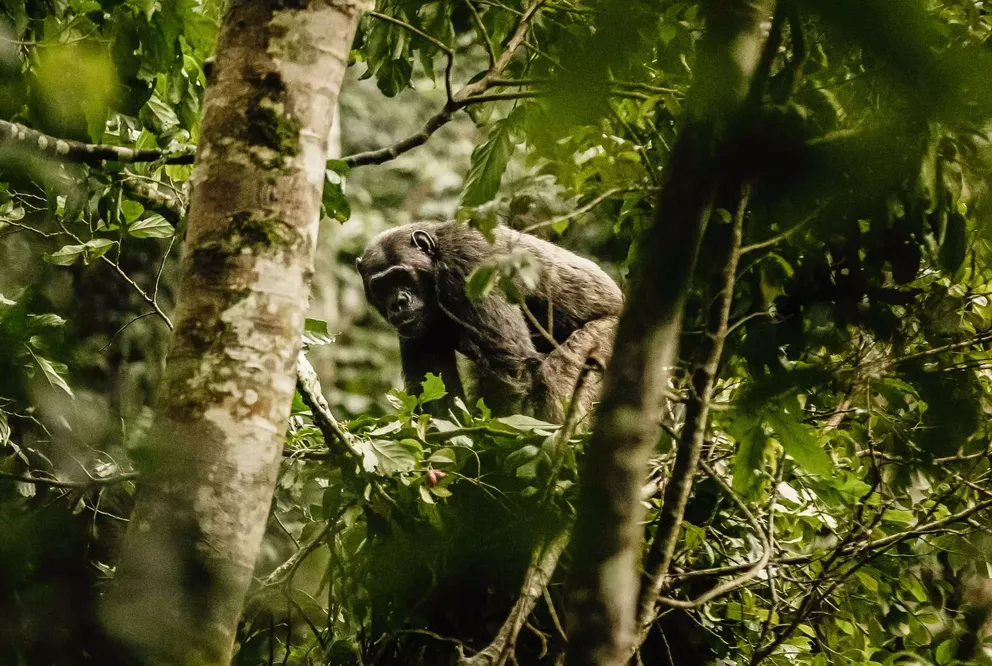
3-Day Kibale Chimpanzee Trekking Safari
A short and immersive chimpanzee trekking experience in Kibale Forest, perfect for travelers seeking Uganda’s top primate encounters.
Request a Free Quote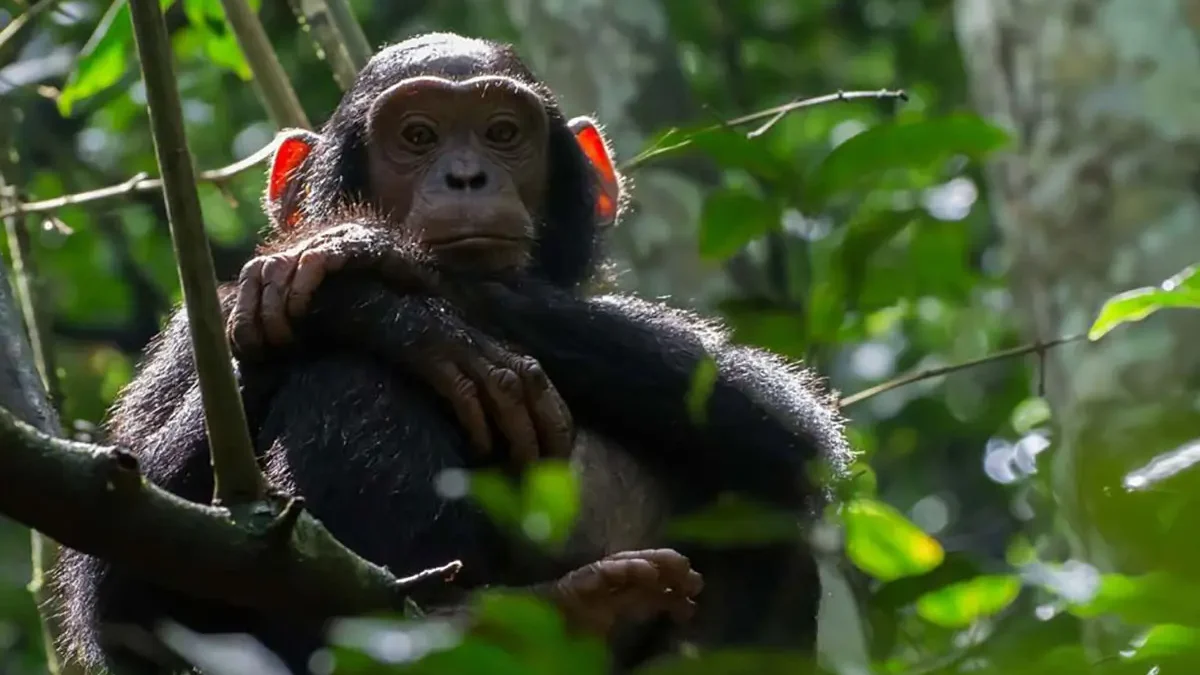
4-Day Kibale Chimpanzee Trek & Bigodi Eco-Walk
Explore Kibale’s primate capital with a scenic forest trek followed by the Bigodi Wetland walk for birds, monkeys, and local culture.
Request a Free Quote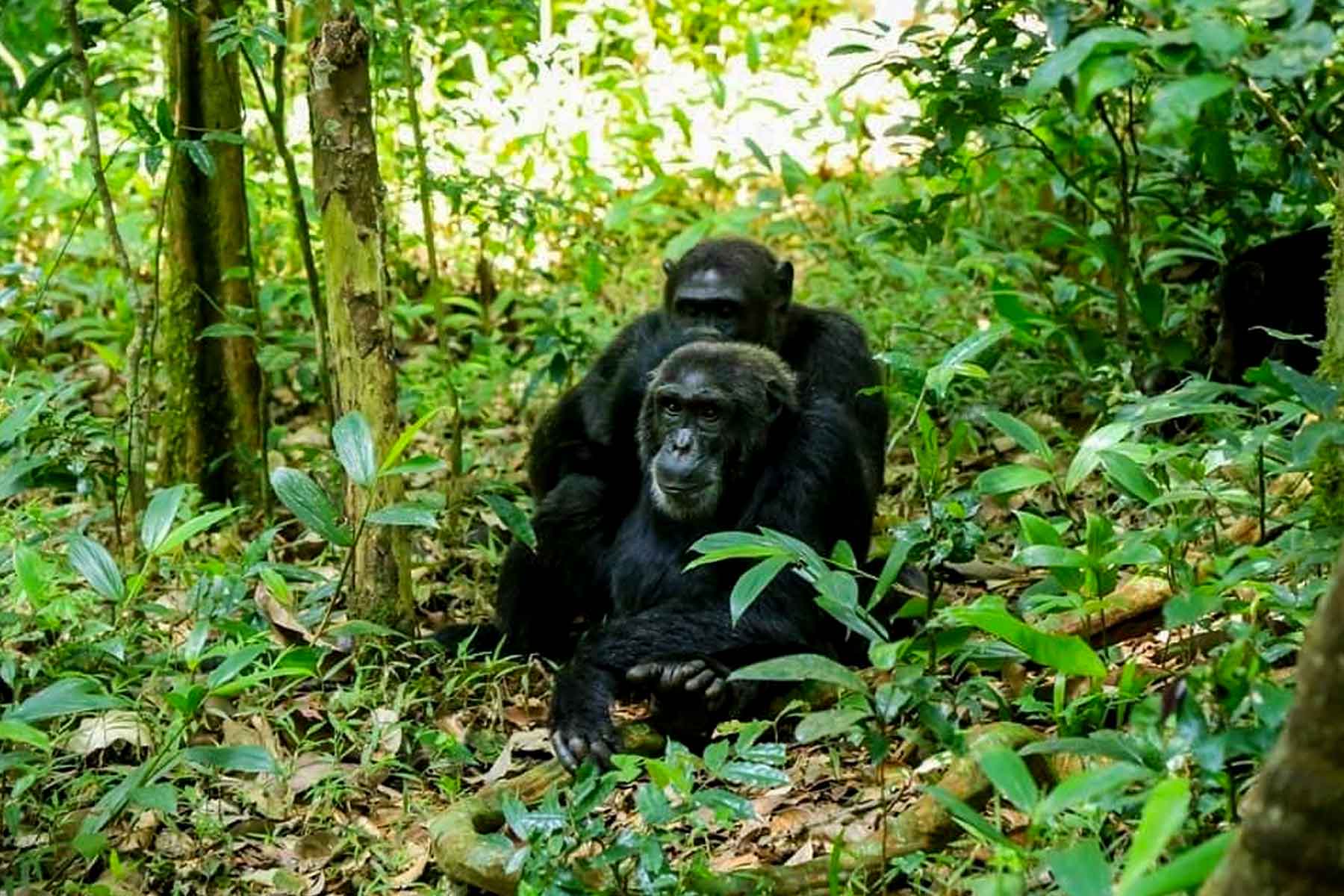
5-Day Luxury Chimpanzee Trekking Safari (Kibale)
A premium experience with boutique forest lodges, private guides, and exclusive access to Kibale’s most photogenic primate zones.
Request a Free Quote
6-Day Chimpanzee Habituation Experience in Kibale
Spend 4 hours with semi-habituated chimps during Uganda’s exclusive Chimpanzee Habituation Experience for deep photography moments.
Request a Free Quote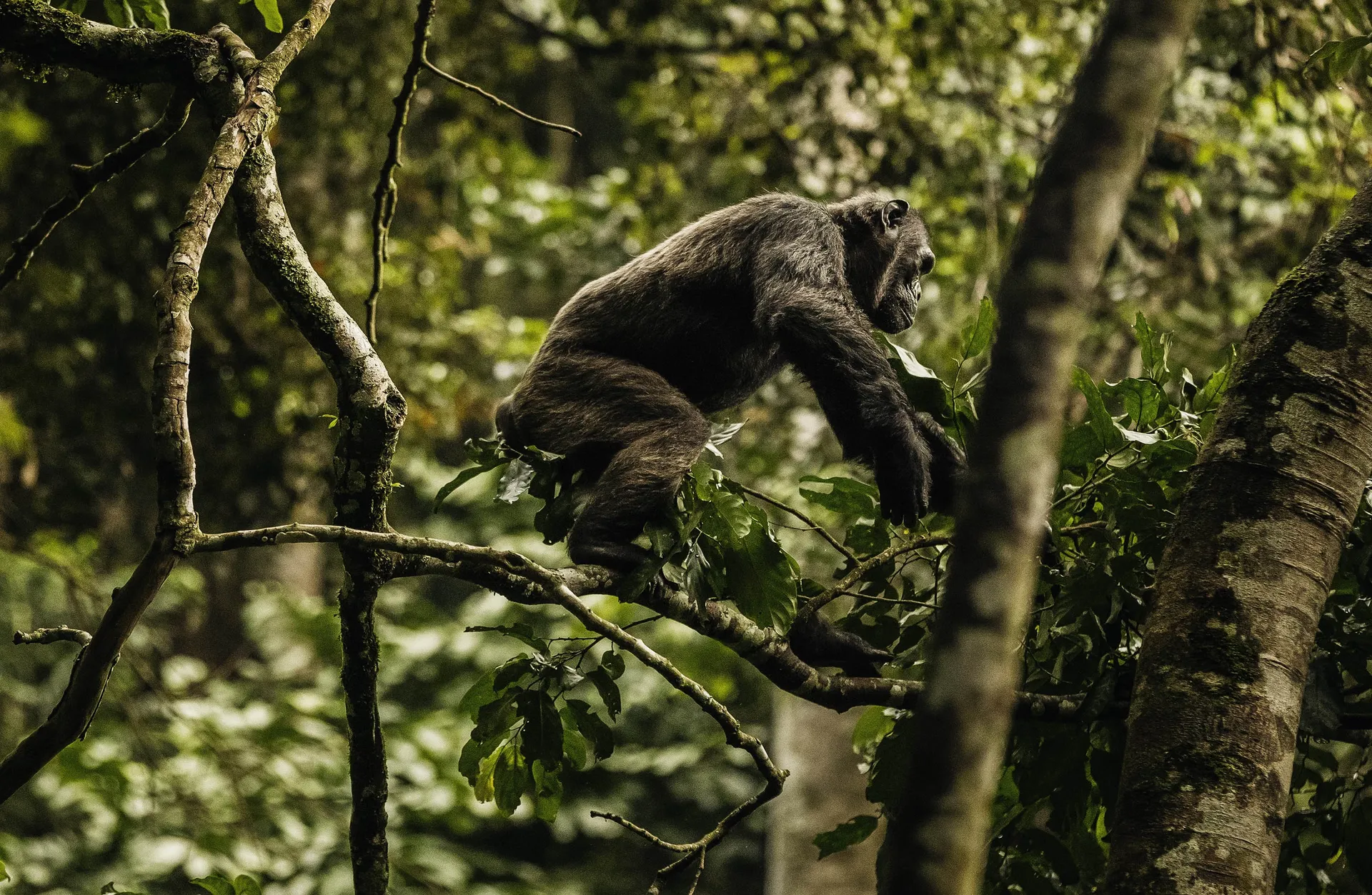
3-Day Family-Friendly Chimpanzee Trekking (Kibale)
An easy-paced primate adventure ideal for families with children or seniors, featuring gentle trekking trails and relaxed forest experiences.
Request a Free Quote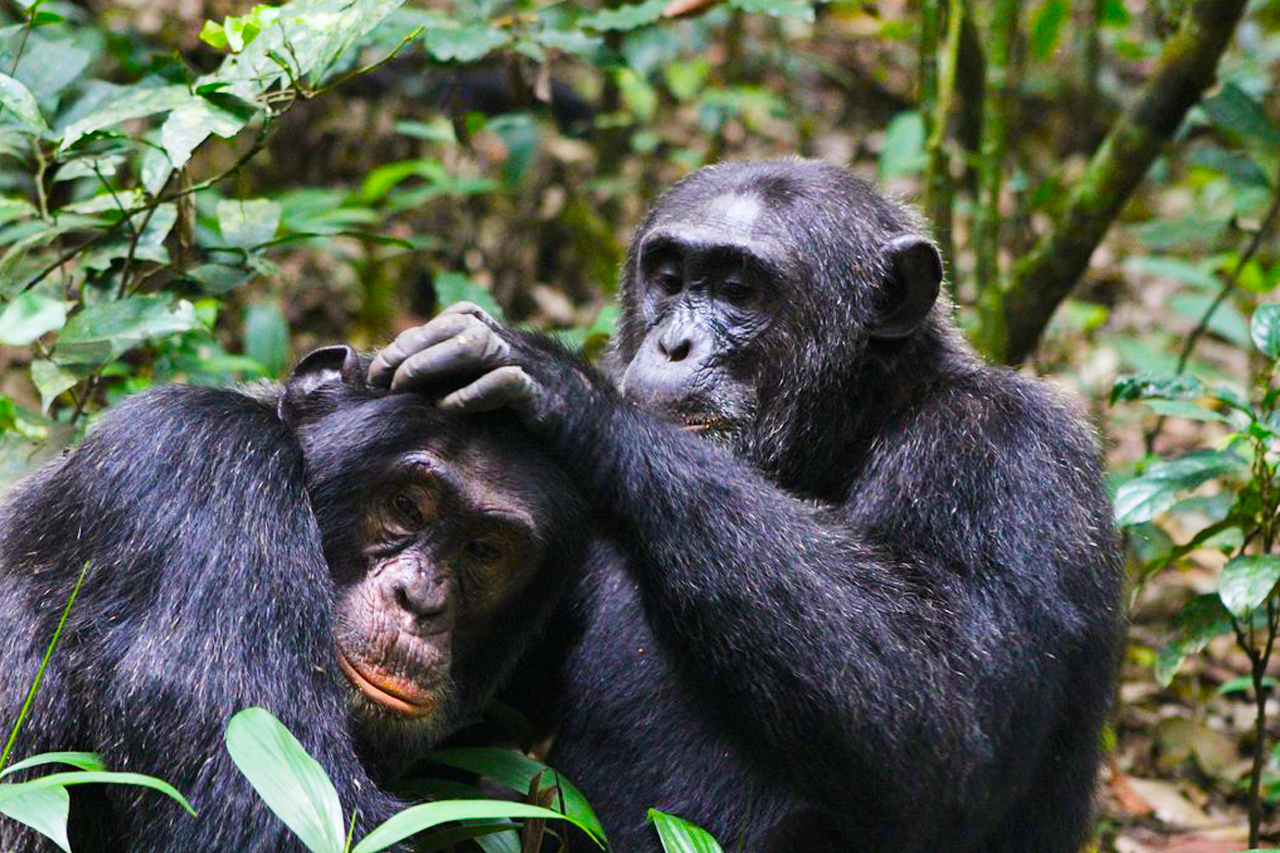
7-Day Uganda Chimpanzee Trekking & Wildlife Safari
A beautiful combination of Kibale chimpanzees, Queen Elizabeth wildlife viewing, and scenic crater lakes exploration.
Request a Free Quote
8-Day Primate Safari Uganda (Kibale, Bwindi & More)
A primate-focused journey featuring Kibale chimpanzee trekking, gorillas in Bwindi, and golden monkeys in Mgahinga.
Request a Free Quote
3-Day Last Minute Chimpanzee Trekking (Kibale)
Perfect for spontaneous travelers, this itinerary secures last-minute Kibale chimp permits with flexible trekking dates.
Request a Free Quote
4-Day Kibale Chimpanzee Trekking & Crater Lakes Tour
Enjoy Uganda’s most scenic region with a chimpanzee trek in Kibale and breathtaking crater lake viewpoints in Fort Portal.
Request a Free Quote
5-Day Kibale Forest Chimpanzee & Nature Safari
A refreshing nature-focused journey featuring chimpanzees, swamp walks, nature hikes, crater lakes, and cultural visits.
Request a Free Quote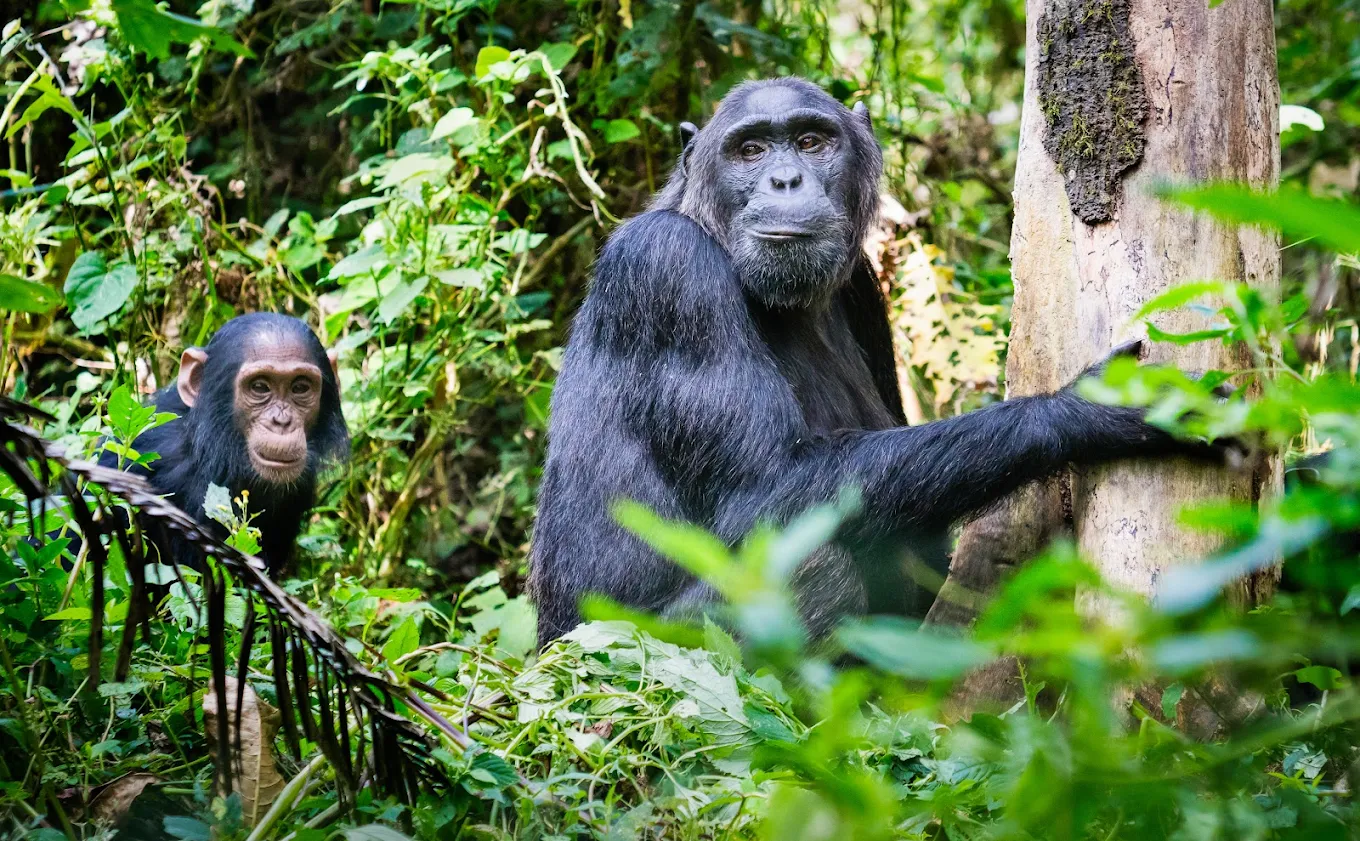
6-Day Chimpanzee Habituation & Primate Circuit (Kibale)
A deep primate immersion featuring the rare Chimpanzee Habituation Experience plus monkeys, birds, and forest trails.
Request a Free Quote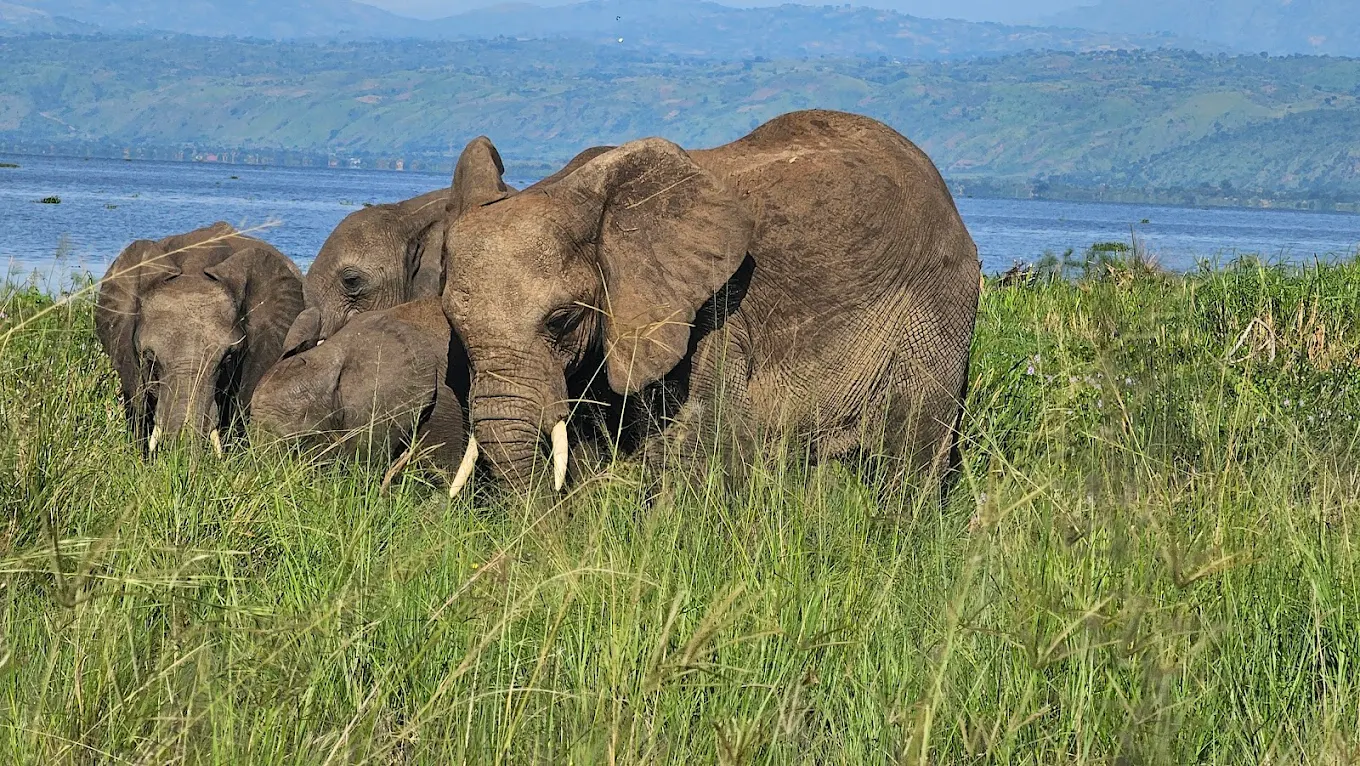
10-Day Uganda Primates & Wildlife Grand Safari
A signature itinerary featuring Kibale chimpanzees, Bwindi gorillas, Murchison Falls wildlife, and Ziwa rhinos.
Request a Free QuotePlan your chimpanzee safari in Kibale National Park with the experts.
We arrange permits, guides, transfers, and accommodations, all customized to your travel goals and budget.
Book Your Chimpanzee Safari Now
Where is Kibale National Park Located?
Kibale National Park is located in western Uganda, spanning the districts of Kabarole and Kamwenge, near the scenic town of Fort Portal. The park lies at the edge of Uganda’s Great Rift Valley and forms part of a rich corridor of protected landscapes that includes Queen Elizabeth National Park, the Rwenzori Mountains, and Semuliki National Park.
Covering approximately 795 square kilometers, Kibale sits at the crossroads of tropical rainforest and savannah, making it one of the most biodiverse ecosystems in East Africa. Its altitudinal range, stretching from 1,100 to 1,600 meters—supports dense evergreen forest, crater lakes, swamp systems, and riverine habitats teeming with wildlife.
Major Access Points:
- Fort Portal: The nearest city, located just 36 km from Kibale’s Kanyanchu Visitor Center. Fort Portal has good infrastructure, fuel stations, banks, and hotels.
- Kampala / Entebbe: The capital and main international airport are approximately 5 to 6 hours away by road.
- Queen Elizabeth National Park: Travelers often combine chimpanzee trekking in Kibale with a wildlife safari in Queen Elizabeth, located just 2 to 3 hours south.
Whether you’re traveling independently or as part of a guided safari, Kibale is easily accessible and well-suited for inclusion in multi-park Uganda itineraries.
At Nextgen Safaris, we offer flexible routes and custom transfers between Kibale National Park, Bwindi Impenetrable National Park, Murchison Falls National Park, and other parks, allowing you to build a seamless journey through Uganda’s natural wonders.
What Makes Kibale National Park Unique?

Kibale National Park isn’t just another forest reserve, it’s one of Africa’s most important biodiversity strongholds and a global hotspot for primate conservation and research. What sets Kibale National Park apart is its rare combination of high primate diversity, reliable chimpanzee tracking, and its accessibility as part of a larger safari circuit across Uganda’s western tourism belt.
Here’s what makes Kibale truly special:
1. Home to the Largest Population of Wild Chimpanzees in Uganda
Kibale protects over 1,500 wild chimpanzees, many of which have been habituated for tourism or research. This makes it the most consistent and rewarding chimpanzee trekking destination in East Africa, with success rates above 90% on most treks.
2. Highest Primate Diversity in Africa
With 13 species of primates, including red colobus, black-and-white colobus, grey-cheeked mangabey, L’Hoest’s monkey, vervets, and olive baboons, Kibale is known as the Primate Capital of East Africa. For visitors passionate about primates beyond gorillas, Kibale National Park is unmatched.
3. Forest Birding Paradise
Birders are drawn to Kibale for specialties such as the green-breasted pitta, crowned eagle, and African grey parrot. The park’s diverse habitats make it one of Uganda’s top birdwatching destinations, with over 370 recorded species.
4. Accessible and Well-Connected
Unlike remote parks, Kibale is easily accessible from Fort Portal, has good infrastructure, and is often combined with safaris to Queen Elizabeth National Park, Semuliki, Bwindi Impenetrable National Park and Lake Mburo National Park, forming a perfect loop for longer Uganda trips.
5. Home of the Chimpanzee Habituation Experience
Kibale is the only place in Uganda where visitors can join a full-day chimpanzee habituation experience, spending up to 6 hours in the forest alongside researchers and conservationists as they follow semi-habituated chimpanzees.
Whether you’re an adventurer, a primate enthusiast, or a photographer seeking emotional encounters with wild apes, Kibale National Park offers a raw, sensory, and deeply educational experience, all within a well-managed, conservation-focused setting.
Chimpanzee Trekking in Kibale National Park

Chimpanzee trekking in Kibale National Park is one of Uganda’s most intimate and exhilarating wildlife encounters. Every morning and afternoon, small groups of travelers set off into the forest with experienced guides and trackers in search of habituated chimpanzee families, often heard before they are seen, through distant hoots and branch crashes echoing in the canopy.
What to Expect on a Chimp Trek
Treks begin at Kanyanchu Visitor Centre, usually around 8:00 AM for the morning shift or 2:00 PM for the afternoon shift. After a detailed briefing, you’ll enter the forest in groups of up to 6 visitors, led by a Uganda Wildlife Authority guide and one or two trackers.
Depending on the location of the chimpanzees, you may walk 30 minutes to 2 hours through dense forest paths, crossing streams and listening for vocal clues. Once contact is made, you’ll spend a maximum of one hour observing the chimpanzees up close—watching them feed, groom, nest, or play.
With over 90% success rates, Kibale National Park is the most reliable place in Uganda to see wild chimpanzees.
Key Trekking Details:
- Minimum Age: 12 years
- Group Size: Max 6 visitors per group
- Duration: 2–4 hours total (1 hour with chimps)
- Fitness Level: Moderate (forest terrain with some slopes)
- Photography: Allowed (no flash)
- Guides: Professional UWA rangers and trackers
Two Options to Choose From:
- Standard Chimpanzee Trekking: Ideal for first-time visitors, lasting around 3 hours total.
- Chimpanzee Habituation Experience (CHEX): A full-day encounter following semi-habituated chimpanzees with researchers, perfect for wildlife photographers and primate enthusiasts.
At Nextgen Safaris, we secure your chimpanzee permits, arrange expert-guided treks, and combine this experience with other top destinations like Queen Elizabeth National Park, Bwindi Impenetrable National Park and Murchison Falls National Park, all tailored to your style of travel: budget, midrange or luxury.
Chimpanzee Permit Prices & Booking Info
To trek chimpanzees in Kibale National Park, visitors are required to obtain a chimpanzee trekking permit issued by the Uganda Wildlife Authority (UWA). These permits are limited per day to minimize impact on the chimps and forest ecosystem, so advance booking is essential, especially in high season.
Current Chimpanzee Permit Prices (As of 2025)
| Visitor Category | Kibale Chimpanzee Trekking Permit |
|---|---|
| Foreign Non-Residents (FNR) | $300 USD per person |
| Foreign Residents (FR) | $250 USD per person |
| East African Citizens | UGX 250,000 per person |
Chimpanzee Habituation Experience (CHEX) permits cost:
- $250 USD per person for a half-day session (when available)
- Full-day CHEX permits are often reserved for researchers or high-demand private safaris
Prices include park entrance and ranger fees, but do not include transport, accommodation, meals, or private guiding.
How to Book Your Permit with Nextgen Safaris
At Nextgen Safaris, we make the permit process stress-free by:
- Securing your chimpanzee trekking slot directly with UWA
- Advising on the best trekking sessions (morning vs afternoon)
- Offering fully packaged tours that include accommodation, transfers, and a professional guide
- Combining chimp trekking with gorilla trekking, Big Five safaris, or Lake Bunyonyi extensions
Permits can sell out up to 6 months in advance—especially in June to August and December to February.
Ready to reserve your chimpanzee trekking experience in Kibale National Park?
Click here to Book Now with Nextgen Safaris
Best Time to Visit Kibale National Park
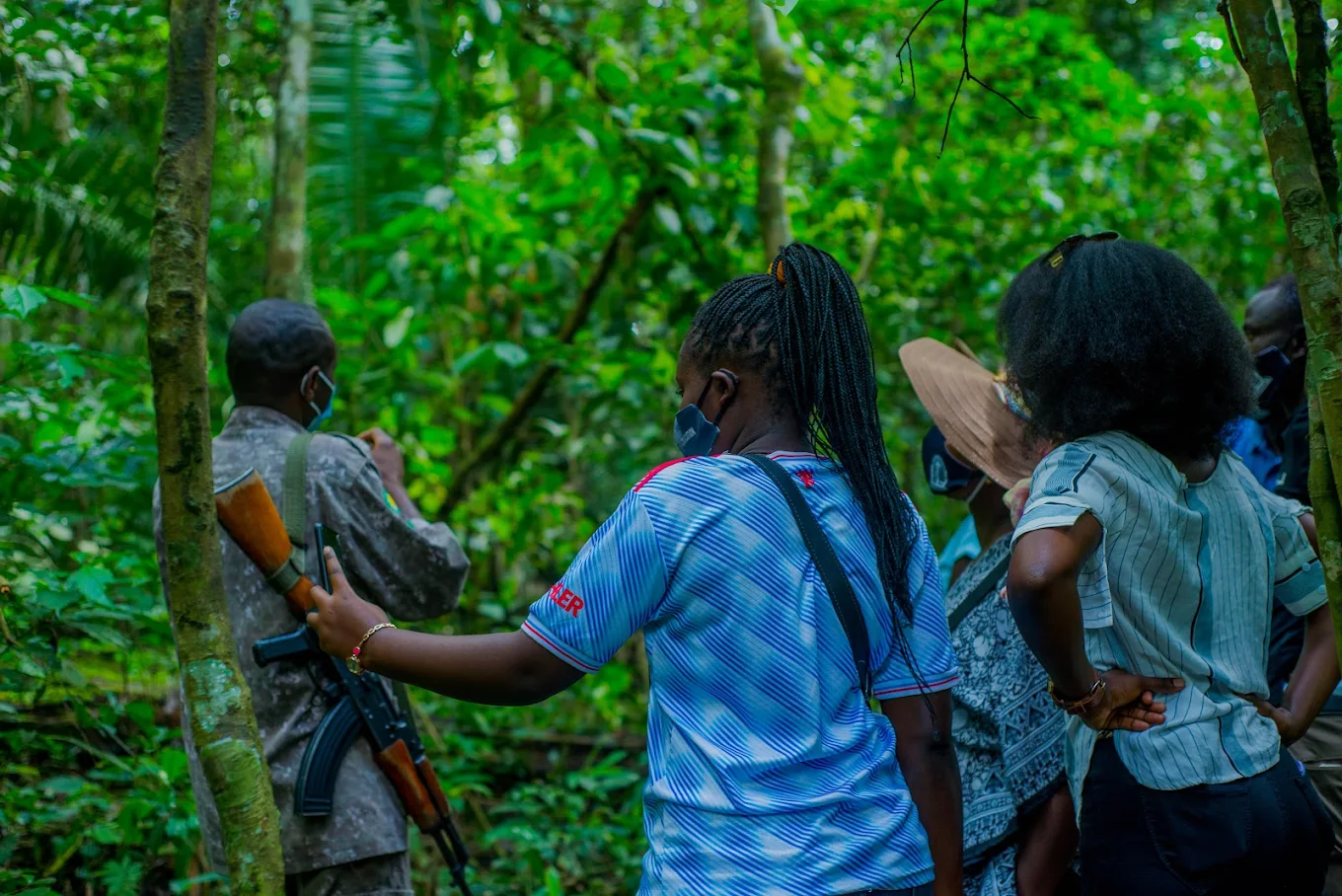
Kibale National Park is open year-round, but the best time to visit for chimpanzee trekking is during the dry seasons when trails are less slippery and wildlife movement is more predictable. These periods offer higher visibility and a more comfortable trekking experience.
Best Time for Chimpanzee Trekking in Kibale National Park:
- June to September (long dry season)
- December to February (short dry season)
During these months:
- Trails are drier, making trekking easier
- Chimpanzees are more active and easier to follow
- Tourist numbers are higher, so it’s important to book permits well in advance
Rainy Season (March to May, October to November)
While chimpanzee sightings are still very possible, these months come with:
- Heavier rains, leading to slippery forest trails
- Lower travel costs and fewer crowds
- Good conditions for birding, as migratory birds are present
If you’re looking for a budget-friendly safari and don’t mind a bit of mud, the rainy season offers good value and photographic opportunities—especially for birdwatchers and repeat travelers.
Our Advice at Nextgen Safaris:
We recommend June to September for first-time chimpanzee trekkers. But if you’re combining Kibale with gorilla trekking, Murchison Falls National Park or Queen Elizabeth National Park, we’ll help you plan a weather-smart, seamless itinerary across Uganda’s safari regions.
Talk to Us Today to Customize Your Safari Dates
Other Wildlife & Birding in Kibale National Park

While chimpanzee trekking is the main highlight of Kibale National Park, the forest offers a much broader wildlife experience for travelers interested in primates, rare birds, and elusive mammals of the rainforest.
Other Primates in Kibale
Kibale National Park has the highest density and diversity of primates in East Africa. In addition to chimpanzees, you may encounter:
- Red-tailed monkeys
- Black-and-white colobus monkeys
- L’Hoest’s monkeys (rare and endemic to the Albertine Rift)
- Olive baboons
- Grey-cheeked mangabeys
- Vervet monkeys
- Bush babies and pottos (often seen on night walks)
Birding in Kibale National Park – A Hidden Gem
With over 370 bird species, Kibale National Park is one of Uganda’s premier destinations for forest birding. It’s especially known for sightings of:
- Green-breasted pitta (highly sought-after and rarely seen elsewhere)
- African grey parrot
- Black bee-eater
- Crowned eagle
- Blue-headed sunbird
- Yellow-spotted barbet
Most birdwatching is done along the main forest trails, around Kanyanchu, and in Bigodi Wetland Sanctuary—a nearby community-based project rich in both birds and primates.
Other Mammals in Kibale National Park
Though shy and rarely seen, Kibale National Park is also home to:
- Forest elephants (smaller and hairier than savannah elephants)
- Duikers, bushbucks, and sitatungas
- Leopards (extremely rare)
- Civets and mongooses
- Numerous reptiles, butterflies, and amphibians
Kibale’s complex ecosystem makes it a must-visit for nature lovers, primate researchers, and wildlife photographers seeking depth and diversity beyond savannah game drives.
How to Get to Kibale National Park
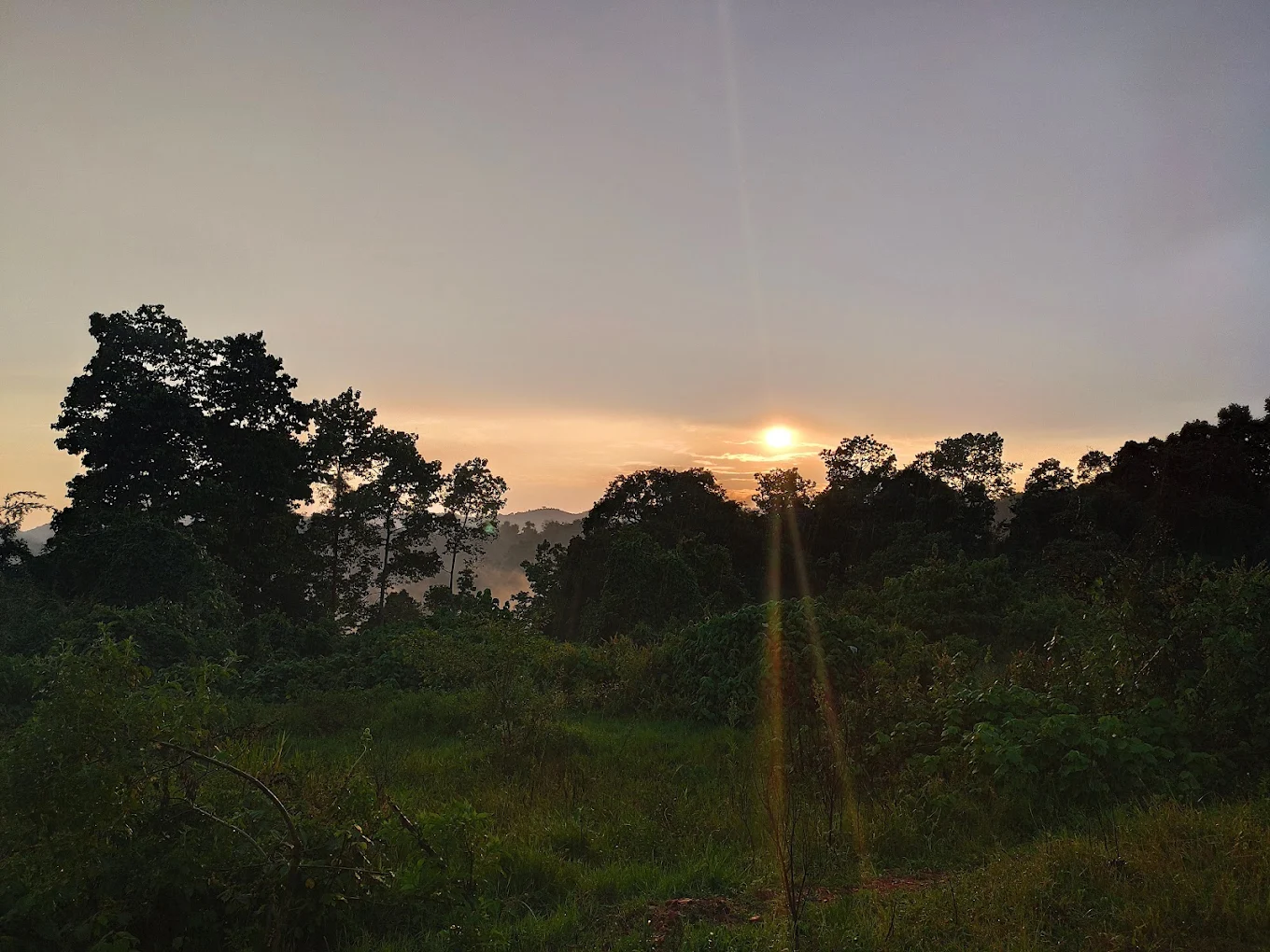
Kibale National Park is located in western Uganda and is easily accessible by both road and air, making it a popular stop on multi-destination Uganda safaris. Most travelers reach the park via Fort Portal, a well-developed town that acts as the primary gateway to the forest.
Road Access
- From Kampala or Entebbe: The drive takes approximately 5 to 6 hours (around 300 km) on a tarmac road. This is the most common route for those starting their safari from Uganda’s capital or international airport.
- From Queen Elizabeth National Park: Kibale is just 2 to 3 hours’ drive north of Queen Elizabeth National Park, making it ideal for wildlife-to-primates circuit safaris.
- From Murchison Falls National Park: It takes around 6 to 7 hours to drive south to Kibale National Park, passing through Hoima and Fort Portal.
- From Bwindi Impenetrable National Park: The route is longer (6 to 8 hours), but many travelers combine gorilla trekking in Bwindi Impenetrable National Park with chimpanzee trekking in Kibale National Park for a full primate experience.
Our Nextgen Safaris private tours include well-maintained 4×4 vehicles with professional English- or German-speaking guides to ensure comfort and safety along these routes.
Air Access
Travelers who prefer to reduce road time can fly from Entebbe International Airport to Kasese Airstrip, which is about 1.5 to 2 hours’ drive from Kibale. Daily domestic flights are operated by Aerolink Uganda and other safari aviation companies.
Our team provides airport pickup and transfer services from Kasese or Fort Portal to your lodge near Kibale National Park or directly to Kanyanchu Visitor Center for chimpanzee trekking.
Kibale National Park is strategically located between savannah parks and mountain gorilla reserves, making it a perfect stop for customized itineraries. At Nextgen Safaris, we offer flexible combinations of chimpanzees, gorillas, game drives, and cultural visits to create seamless journeys across Uganda.
Lodges and Accommodation in Kibale National Park
Kibale National Park offers a wide selection of lodges, camps, and eco-retreats to match every travel style—from backpackers and budget trekkers to luxury honeymooners and wildlife photographers. Most accommodations are located within a 10–30 minute drive from Kanyanchu Visitor Centre, where chimpanzee trekking starts.

Below is a curated guide to accommodation options around Kibale National Park, organized by category:
Luxury Lodges
These lodges offer premium comfort, forest views, gourmet meals, and personalized service.
- Ndali Lodge – Stunning crater lake views, colonial-style cottages, private verandas.
- Kyaninga Lodge – Luxurious cabins built on a volcanic ridge, close to Fort Portal.
- Papaya Lake Lodge – Peaceful, artful bungalows near Lake Nyinambuga, with a pool and crater views.
- Crater Safari Lodge – Overlooks Nyinabulitwa Crater Lake; ideal for honeymooners and birdwatchers.
Midrange Lodges
Well-rated for comfort and value, with excellent access to the park and friendly service.
- Turaco Treetops – Stylish treehouse-style lodge close to chimp trekking starting point.
- Chimpanzee Forest Guest House – Family-run, located on an old tea plantation near Kanyanchu.
- Isunga Lodge – Midrange eco-lodge with views of Kibale National Park, Rwenzoris, and the crater lakes.
Budget & Backpacker Options
Affordable, clean, and convenient for travelers on a budget.
- Rweteera Safari Park – Budget bandas and camping by a crater lake.
- Kibale Forest Camp – Offers both safari tents and budget non-self-contained tents.
- Nyinabulitwa Country Resort – Basic but peaceful, great for independent travelers or researchers.
All these properties can be booked with Nextgen Safaris as part of your complete package, including transportation, meals, permits, and guiding.
Whether you prefer forest immersion or crater lake serenity, our team will match your budget, preferences, and travel dates with the best available lodge—ensuring a seamless stay near Kibale.
Sample Kibale National Park Safari Itineraries

At Nextgen Safaris, we design tailor-made itineraries that include Kibale National Park as a core destination—whether you’re visiting just for chimpanzee trekking or combining it with gorilla trekking, Big Five game drives, or cultural encounters. Here are a few popular safari itineraries that include time in Kibale National Park:
🔹 3 Days Kibale Chimpanzee Trekking Safari
- Day 1: Transfer from Entebbe/Kampala to Kibale, overnight at lodge
- Day 2: Morning chimpanzee trekking, Bigodi Wetland walk
- Day 3: Return to Kampala or continue to Queen Elizabeth NP
🔹 5 Days Kibale and Queen Elizabeth Safari
- Day 1–2: Kibale chimpanzee trekking and Bigodi Swamp
- Day 3–5: Game drives and boat safari in Queen Elizabeth National Park
🔹 7 Days Uganda Primate Safari
- Kibale (chimps) + Bwindi (gorillas) + Lake Bunyonyi (relaxation)
🔹 10 Days Uganda Wildlife & Primates Grand Tour
- Visit Murchison Falls, Kibale, Queen Elizabeth, Bwindi & Lake Bunyonyi
- Includes game drives, boat cruises, chimp and gorilla trekking
Each itinerary can be adjusted to match your budget (budget, midrange, or luxury), travel season, and group size. All packages include:
- Chimpanzee permits
- Accommodation and meals
- All transfers with English or German-speaking guides
- National park entrance fees and all activities
Want to plan your personalized Kibale National Park chimpanzee safari?
We’re ready to help you start planning.
Why Book with Nextgen Safaris
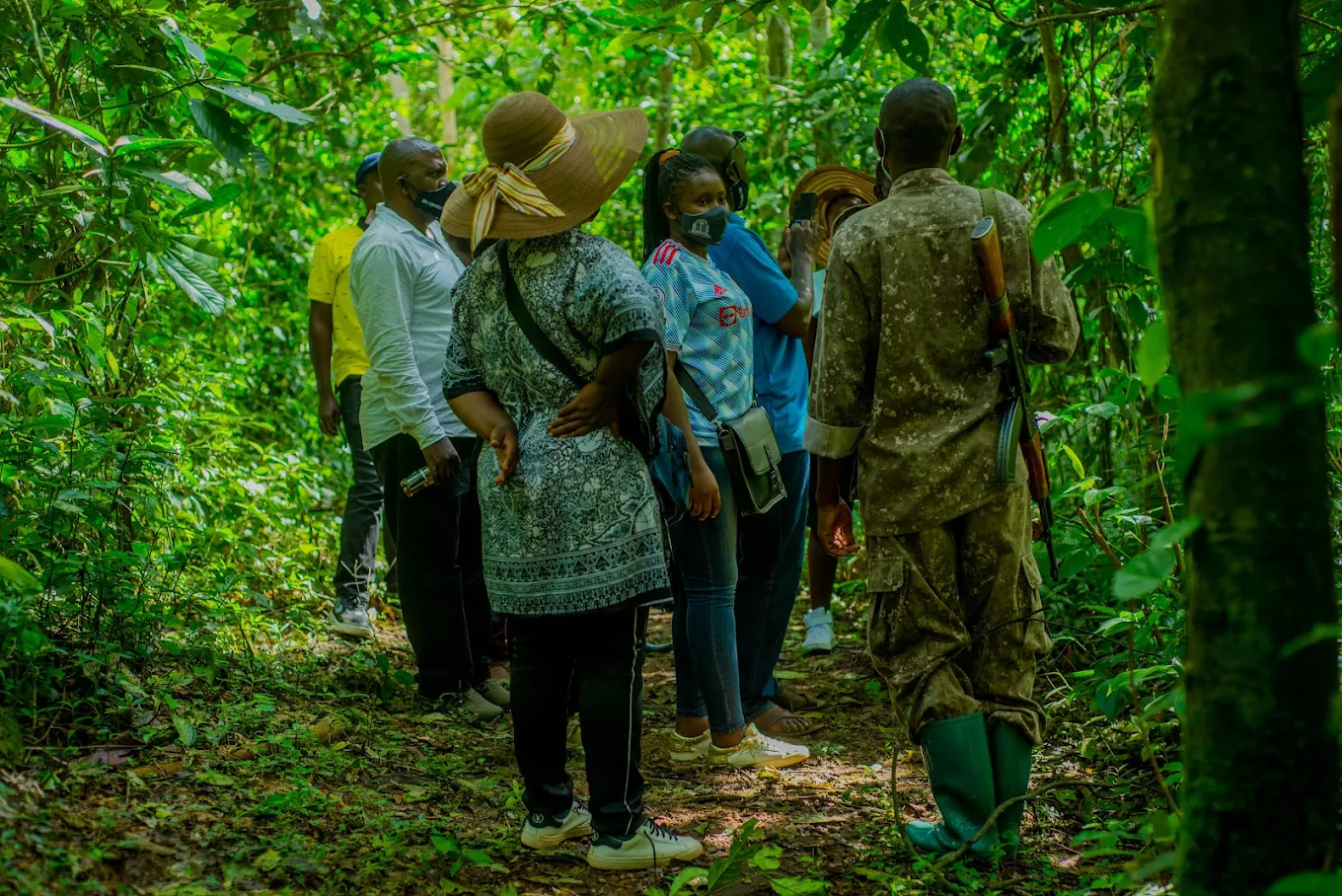
At Nextgen Safaris, we are more than just a travel company—we are passionate conservationists, storytellers, and safari experts who live and breathe East Africa. Every trip we design to Kibale National Park is rooted in authenticity, sustainability, and your unique travel dreams.
Here’s what makes us different:
We Are Uganda-Based & Locally Owned
You’re not dealing with a foreign reseller or middleman—we are on the ground in Uganda, and we know every corner of the forest, every lodge, and every guide.
Specialists in Primate Safaris
Our team includes expert naturalists and certified guides who specialize in chimpanzees and gorillas. We understand the best trekking times, trail conditions, and permit logistics.
Options for Every Budget
Whether you’re traveling solo, with family, or on a honeymoon, we tailor safaris that meet your exact budget—from backpacker options to luxury lodges.
Seamless Permit Booking & Safari Planning
We handle your chimpanzee trekking permit, accommodations, transport, and activities—all in one package, with full transparency.
Multi-Language Support
We speak your language. Our team includes English- and German-speaking safari guides trained to make your experience personal, fun, and educational.
24/7 Support & Flexible Booking
From the moment you inquire to the day you return home, our team is available to assist. We offer flexible payment plans and support across WhatsApp, email and phone.
Don’t just trek—experience Kibale the right way.
Join hundreds of happy travelers who have booked their Uganda safari with us.
Start Planning Your Chimpanzee Safari Now →
Frequently Asked Questions (FAQs) About Kibale National Park
1. Where is Kibale National Park located?
Kibale National Park is located in western Uganda, near Fort Portal, approximately 320 km from Kampala or Entebbe by road. It’s part of the Albertine Rift and borders Queen Elizabeth National Park to the south.
2. How much is a chimpanzee trekking permit in Kibale?
As of now:
- Foreign Non-Residents: $300 USD
- Foreign Residents: $250 USD
- East African Citizens: UGX 250,000
Permits are required for each person and each trek. We recommend booking at least 2–3 months in advance during the high season.
3. What is the age limit for chimpanzee trekking in Kibale?
The minimum age is 12 years. Children below this age are not allowed on the trekking trails for safety and conservation reasons.
4. Is chimpanzee trekking in Kibale difficult?
Trekking difficulty ranges from moderate to slightly challenging, depending on the weather and chimp movement. Most treks last 2 to 4 hours, including the one hour spent with the chimpanzees.
5. Can I combine Kibale with other safari destinations?
Absolutely. Kibale is a perfect midpoint in many Uganda itineraries. You can easily combine it with:
- Queen Elizabeth National Park (2–3 hours away)
- Bwindi Impenetrable Forest (6–8 hours)
- Murchison Falls (6–7 hours)
- Entebbe/Kampala (5–6 hours)
We can help you build a custom itinerary that fits your travel goals and timeframe.
6. When is the best time to visit Kibale National Park for chimpanzee trekking?
The dry seasons—June to September and December to February, are best for trekking due to clearer trails and more predictable chimpanzee locations.
7. What wildlife will I see besides chimpanzees?
Kibale is home to 13 primate species, including red colobus, black-and-white colobus, L’Hoest’s monkeys, and grey-cheeked mangabeys. You may also spot forest elephants, antelopes, and over 370 bird species, including the rare green-breasted pitta.
8. Where do treks start in Kibale National Park?
Chimpanzee treks typically begin at the Kanyanchu Visitor Centre, which is the park’s main tracking hub.
9. Are night forest walks available in Kibale National Park?
Yes. Night walks allow you to spot nocturnal animals like bush babies, pottos, and owls. These guided walks start around 7:00 PM and last about 1–2 hours.
10. How can I book a safari to Kibale National Park?
You can book a complete chimpanzee safari, including permits, transport, and accommodation—through our team at Nextgen Safaris.
